POSTCARDS: Melissa Riker Reflects on “Capacity, Crackling, and Collaboration" in Strasbourg, France
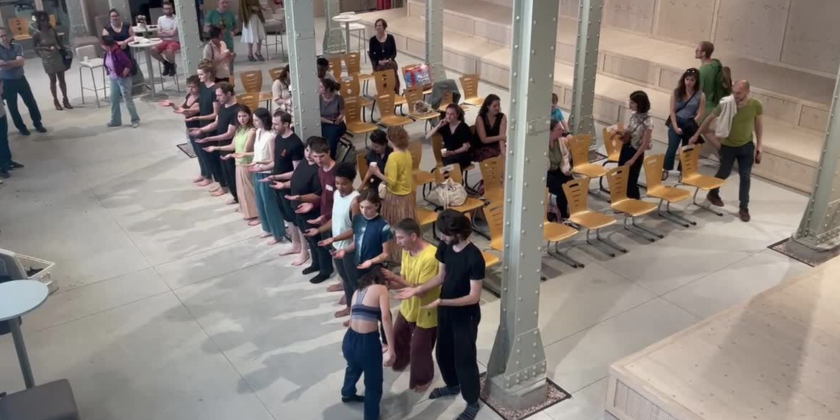
Dear Dance Enthusiast,
I am bubbling over with excitement at the fantastically nerdy dance and science event series my collaborator, geoscientist Dr. Martha (Missy) Cary-Eppes and I accomplished in Strasbourg, France on the weekend of June 2-3, 2023! The two-day event was called Capacity, Crackling, and Collaboration. The series was inspired by our big, collaborative, dance/opera work with Dr. Eppes, Opera on Tap and Anti-Social Music: Capacity, or The Work of Crackling.
Dr. Eppes (who is in Strasbourg as a visiting Fulbright Scholar and USIAS Fellow), and Katiouschka Kuhn, director of Strasbourg’s INLAND Centre Européen de Théâtre Physique co-hosted the events in the newly renovated Ancienne Manufacture de Tabac, an old tobacco factory.
Dr. Eppes has been working with artists to build dialog around how science and art collaborations strengthen the communication of both, and our work together this weekend was another step in that direction.
Dr. Eppes and I hosted a panel of artists and scientists that created lively and inspiring debate, I offered a duet version of Capacity or the Work of Crackling with my Parisian dance colleague, Solène Bossu (of la Compagnie Les Parleuses) on Friday and Saturday. On Saturday, I led a day-long workshop with the artists of INLAND and they bravely performed the new work after Dr. Eppes presented her Universitè de Strasbourg research on long-term natural rock fracturing rates and stress memory.
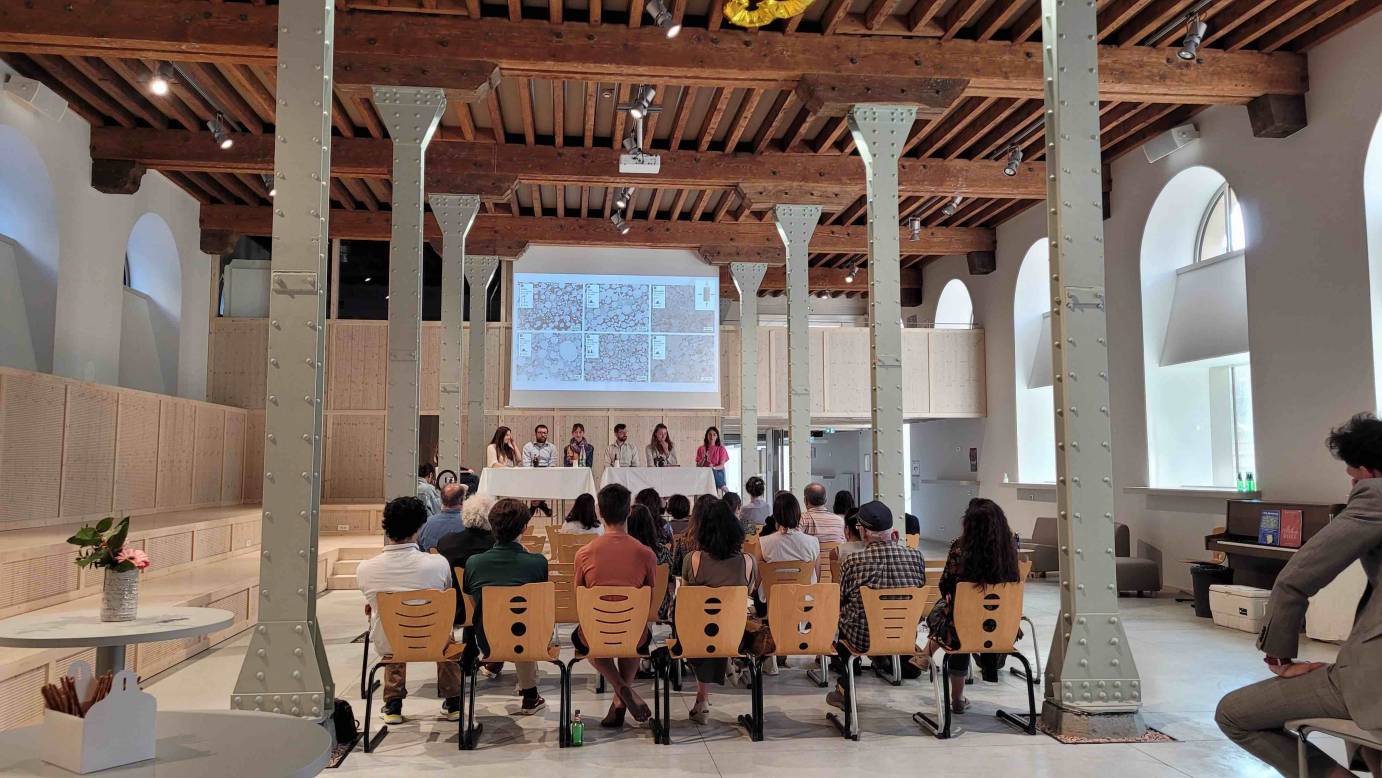
A wide view of the amazing space.
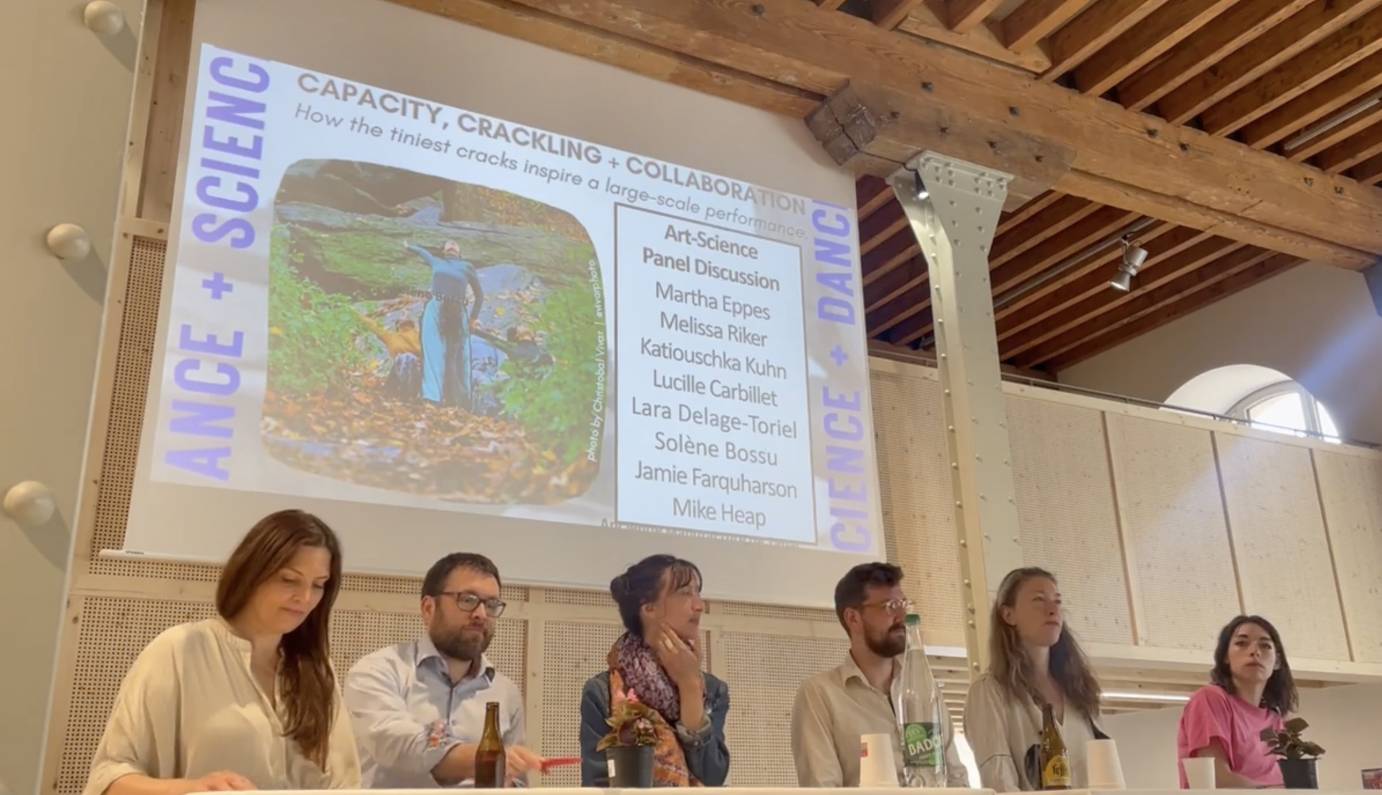
Our panelists: Choreographer Katiouschka Kuhn (regarding her work with breaks in the earth and breaks in reality), volcanologist Professor Mike Heap, choreographer Solène Bossu (regarding her work with trees and a phenomenon called 'Crown Shyness'), experimental and computational geoscientist Jamie Farquharson, Lara Delage-Toriel, (Literature faculty at UNISTRA who uses dance to teach English Literature and the English language) and mechanics geoscientist Lucille Carbillet.
Huge thanks to Julliet (not shown) for her stellar translation skills for the panel, as we had a mix of fluency in the audience and her support was wonderful!
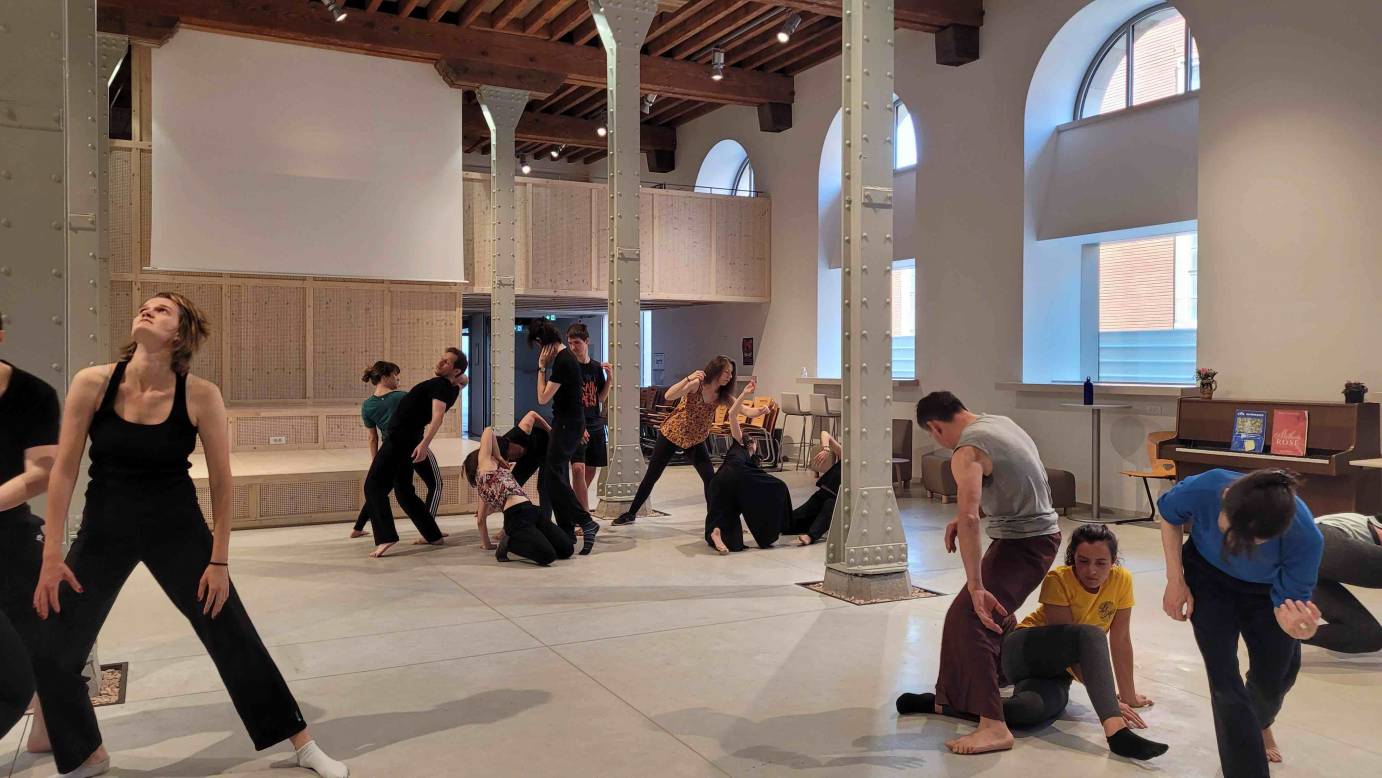
Members of INLAND in our workshop co-creating.
INLAND dancers are of all training levels and a wide variety of ages, it was a joy to spend the day inventing together. After a few hours of creative process and then a lunch break, Dr. Eppes shared her research with the dancers, offering details and answering questions. This helped everyone understand our collaboration further. Post-performance, when they were asked questions by the audience, their answers were deep, astute, and filled with comprehension of what we created together.
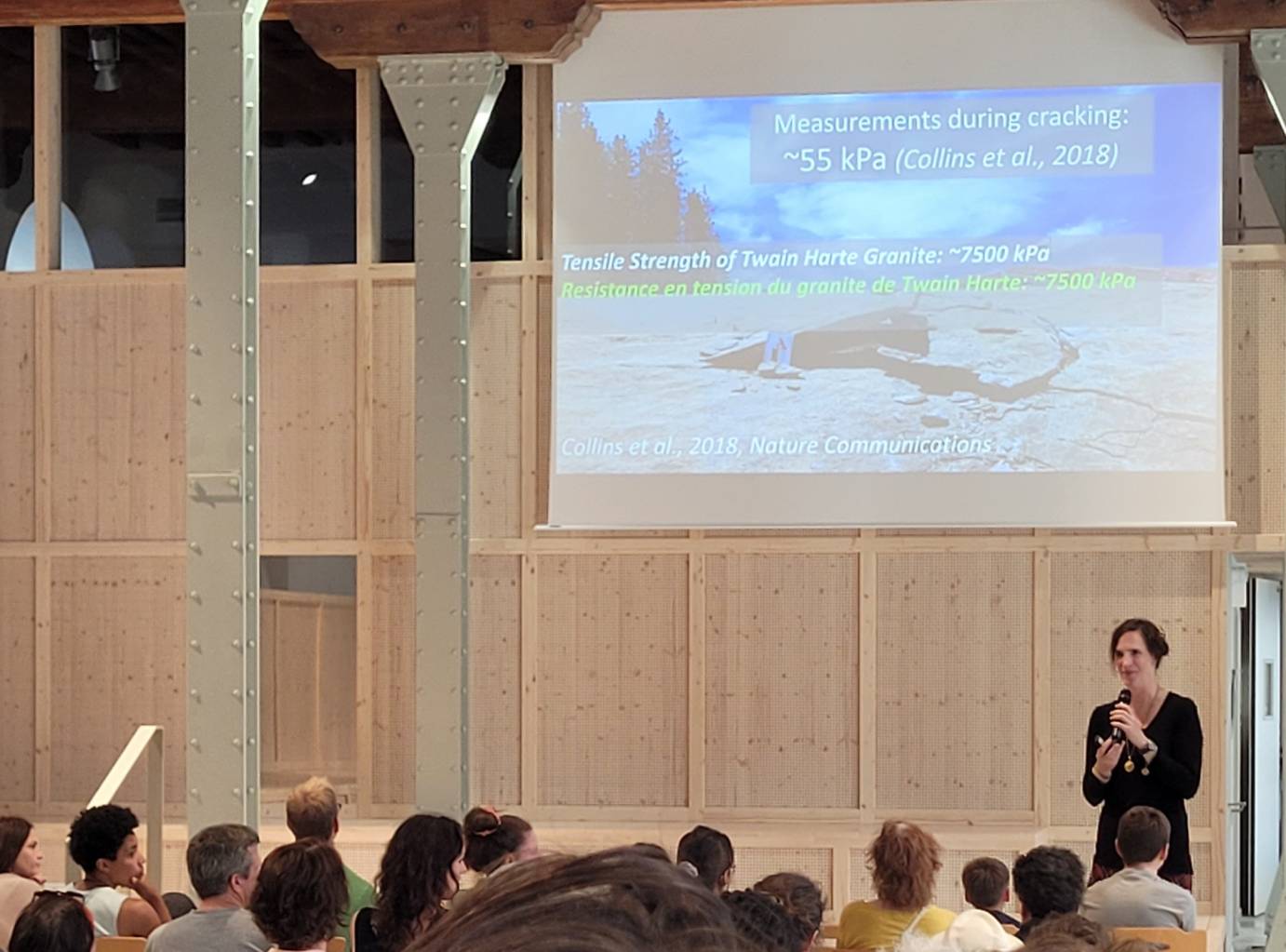
Dr. Eppes delivering a lecture on her work and research — an astounding display of how environmental pressures play a much larger role in the way rocks (and anything else) cracks.
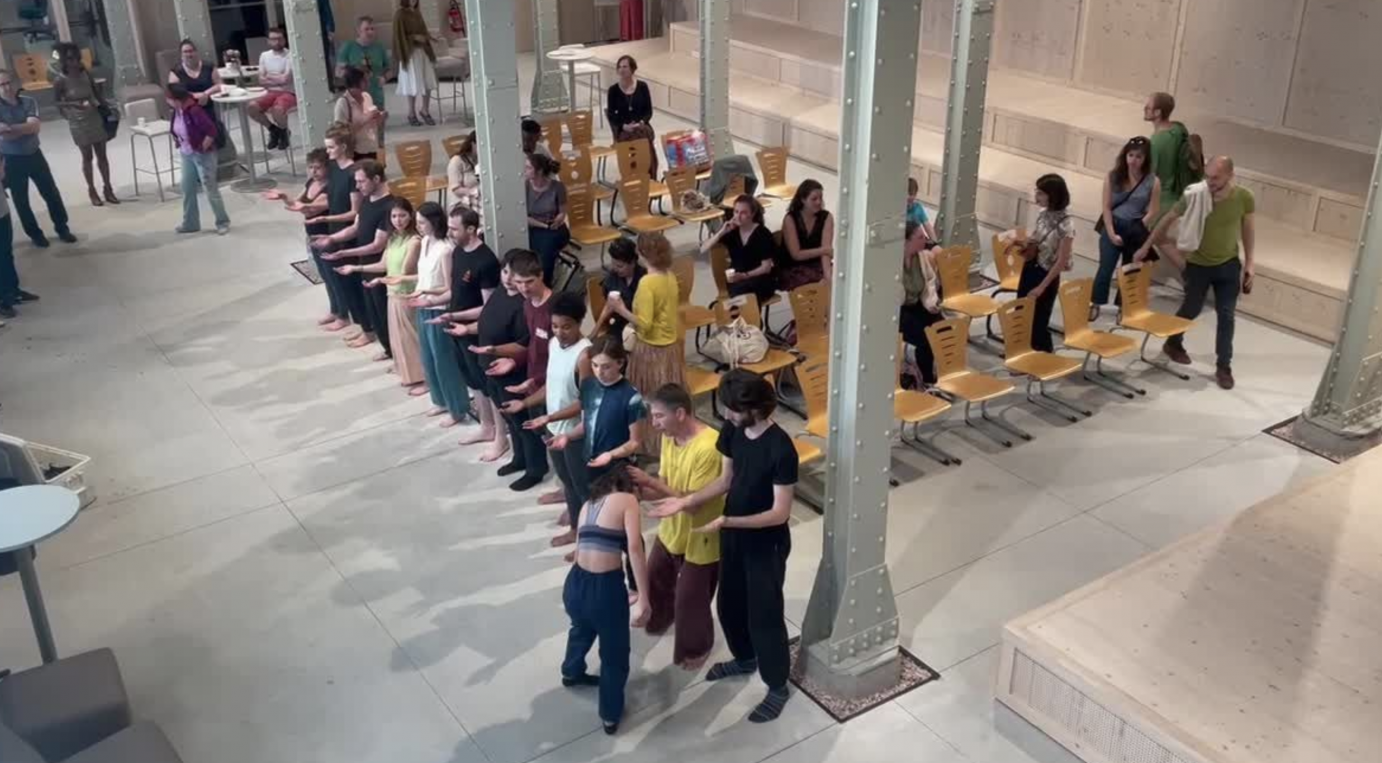
Moments from the workshop participants’ performance. We purposely surprised the audience with each dance work — who wants their audience sitting still during a show, anyway?
Missy and I are so pleased at how well it all went and was received, especially for such a broad audience of artists, scientists and the general public alike. Besides the general relief — the depth, inspiration and cross-pollination of ideas offers energy just thinking about it!
Here are some happy artist photos as I sign off…
.jpg)
Missy, me, Kat and Solène after our very full day of dance and science on Saturday.
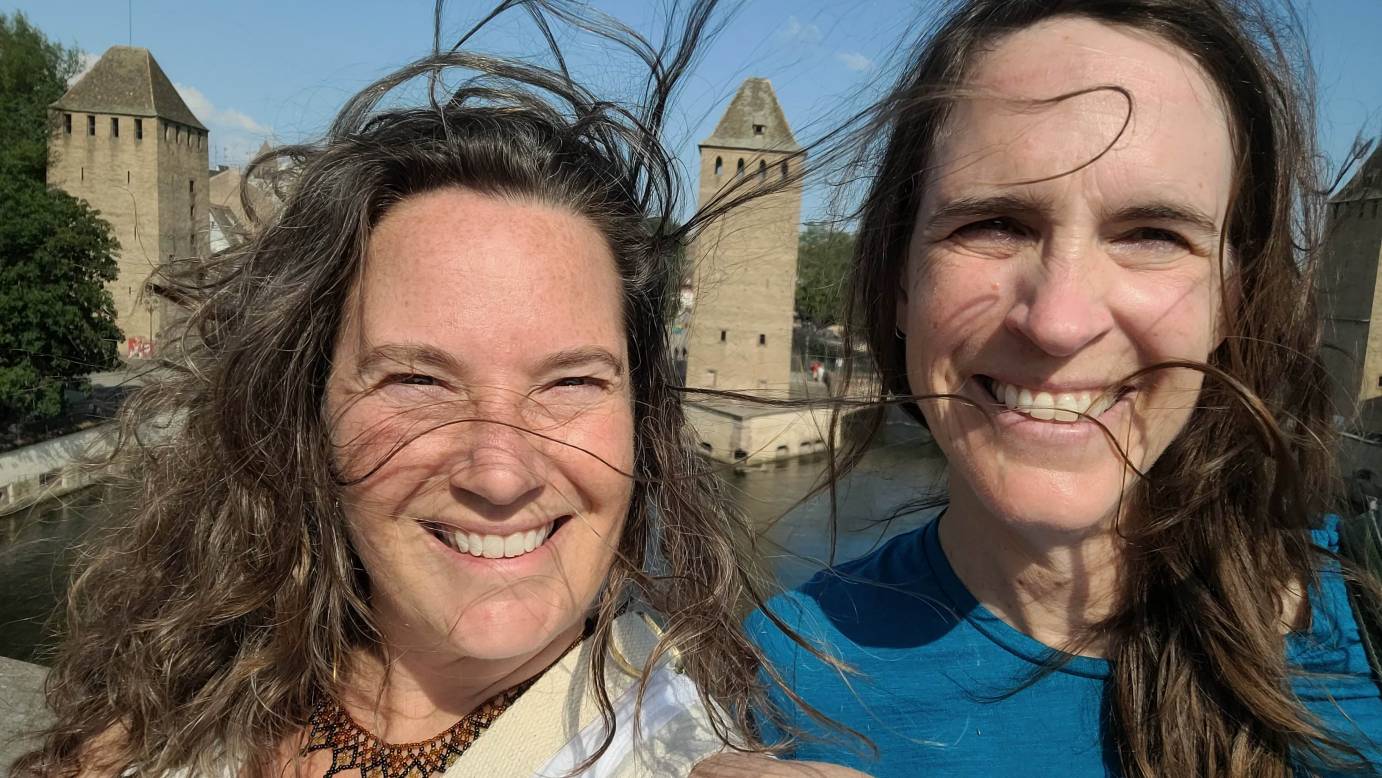
Missy and me with the windy, historic view of Strasbourg behind us.
Thank you for sharing this high with us!
— Melissa











